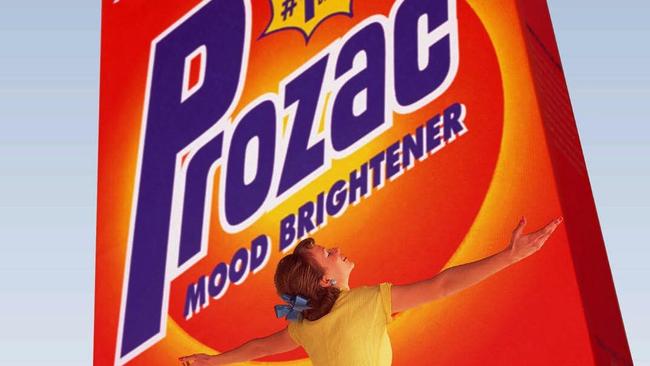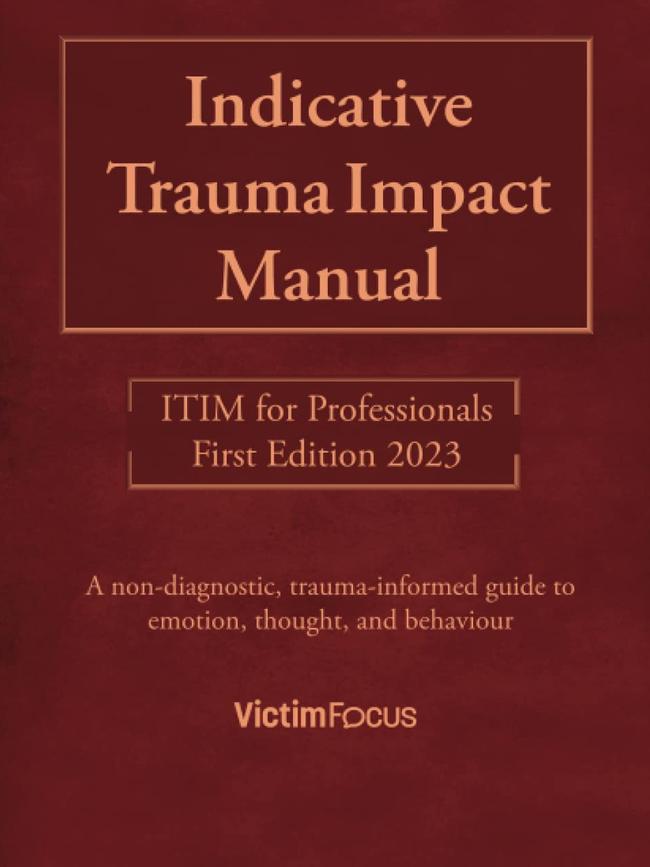How trauma is mistaken for disorder
The mental health profession is now less about healing than it is about management, expedience – the average GP appointment is now less than 15 minutes – and industry kickbacks.

Years ago, I befriended a man whose sessions with his psychiatrist sometimes lasted no more than the time it took him to recite his reaction to the potent psychoactive drugs he had been prescribed and to be given an amended prescription. By the time I met him, he was ingesting more than 10 tablets a day, on indefinite sick leave from his law firm, incapable of holding a cup without shaking, hallucinating most of the day, and attacking imaginary figures in the hallway of his elegant apartment.
Jessica Taylor and Jaimi Shrive wrote the Indicative Trauma Impact Manual: A Non-Diagnostic, Trauma-Informed Guide to Emotion, Thought and Behaviour, not just for doctors, but for those “enmeshed” by their medical beliefs. In the foreword, they ask, “Where does natural distress end, and mental disorder start? Who decides when trauma responses become abnormal? Who decides how long it is acceptable to grieve? Or have nightmares? Some academics have demonstrated that the criteria and lists of symptoms for mental disorders overlap so heavily that a person in distress can be diagnosed with over ten mental disorders at any one time.”

Mental health professionals pathologise trauma for many reasons, the primary one being that the profession is now less about healing than it is about management, expedience – the average Australian GP appointment is now less than 15 minutes – and industry kickbacks.
While not all GPs and mental health professionals are sufficiently irresponsible to act on such enticements, it is clear that many are. Among the wealth of examples: in 2022, pharmaceutical giant Biogen agreed to pay $US900m to settle allegations that it had, under the guise of consultancy fees, bribed medical professionals to prescribe its drugs. Similarly, pharmaceutical giant Novartis was found in 2020 to have spent more than $US100m ($152m) on elite sporting events, fishing junkets, gourmet feasts, and other enticements to bribe doctors; they were made to pay a $US678m settlement. And in 2019, the billionaire founder of Insys Therapeutics was found guilty of bribing doctors to prescribe Subsys, a lethally powerful painkiller made from fentanyl, to patients who did not need it (four other Insys executives were convicted of racketeering).
Taylor and Shrive cannot overturn such unscrupulousness but they can raise awareness. To this end, the manual, rather than the medico-philosophical jargon characteristic of such books, accessibly addresses its subjects, which include the medicalisation of human suffering, theories and models of mental health, anti-pathologising trauma-informed services, trauma responses and coping mechanisms, expressions of trauma in infants and toddlers, physical responses to trauma, bias and oppression in psychiatry, and other useful tools.
For the most part superb – and in some cases, life-altering – the ideas in the manual are far from new. Peter Breggin, the psychiatrist, for example, through court testimony, put an end to lobotomies in America. He has for decades campaigned against the pathologising of trauma.
Less articulate and certainly less original, Taylor, who has a PhD in Psychology from the University of Birmingham Forensic and Criminological Centre, and who was, in 2018, awarded a Fellowship of the Royal Society of Arts for her outstanding contribution to psychology and feminism, is, however, equally and laudably passionate about humanising our culture.
Across the developed world, levels of emotional literacy and empathy are plummeting, which is why, as Taylor and Shrive report, those assured that “they have mental disorders and personality disorders may not be able to confidently describe or identify their valid, natural, normal emotions, thoughts and behaviours, as they have been framed as ‘symptoms’ of a mental illness. Once their mental and emotional life has been recast as disordered and abnormal, some people can have difficulty processing their distress and trauma.”
Psychiatric jargon, the authors continue, “has become so embedded in day-to-day conversations that people no longer describe their fear, sadness, despair, worry, forgetfulness, distress, or helplessness. Instead, they say, ‘my anxiety is playing up’, ‘my depression is bad today’, and, ‘I think I am a bit ADHD’.”
The manual has three outstanding omissions: there is no section on neurodivergence – this should be rectified in further editions – detailed bibliography, or an index (what medical or mental health professional has time to rifle through almost 500 pages of text during a consultation?).
There is also this: while the cultural normalisation and routine administration of psychoactive drugs is an obscenity, there is inarguably a place for their use, particularly in the outer reaches of mental health issues such as schizophrenia, certain manifestations of extreme trauma, and so on.
Taylor and Shrive, who pride themselves on their social awareness, have clearly not considered the needs of, say, the overburdened, underprivileged single parent with a violent autistic child who cannot afford this book, never mind regular therapy (which now – outrageously – sets the distressed back between $100 and $700 per session).
The flaws of the Indicative Trauma Impact Manual: A Non-Diagnostic, Trauma-Informed Guide to Emotion, Thought and Behaviour nonetheless fail to detract from its purpose, which is not only to enlighten, but to begin to restore the empathy, happiness, and humanity leeched from us in increments by the pharmaceutical industry and corrupt professionals who reflexively prescribe life-distorting psychoactive drugs.
Antonella Gambotto-Burke’s new book is Apple: Sex, Drugs, Motherhood and the Recovery of the Feminine. Follow her at www.instagram.com/gambottoburke

To join the conversation, please log in. Don't have an account? Register
Join the conversation, you are commenting as Logout